Subscribe to the Newsletter
Your cart is empty
Shop now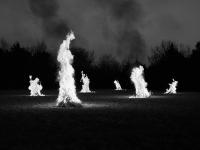

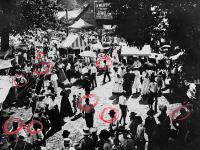
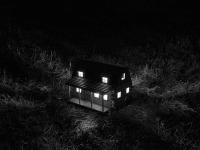
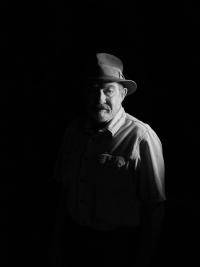
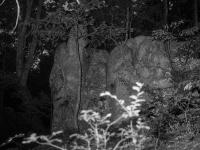
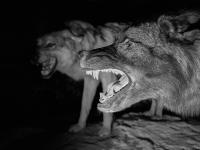

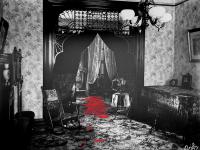

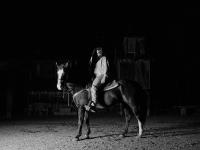











Der Greif Artist Feature Award at FORMAT25: Q&A with Jenna Garrett
Jenna Garrett’s “Teeth of the Wolf”: nationalism and mythmaking in American culture
Der Greif Community Manager Francesca Hummler recently had the pleasure of reviewing portfolios at this year’s FORMAT Festival in Derby. She selected Jenna Garrett for our Der Greif Artist Feature Award, recognizing the outstanding quality of her “Teeth of the Wolf” series. Garrett, the Spectrum Imaging Award winner for FORMAT25, is an artist based in San Francisco, California, with a practice rooted in the Ozarks of southwest Missouri, where she was born. Her work explores nationalism, mythmaking, and their consequences in American culture. “This Holy Hill” (2016-2022) examines her Evangelical upbringing and its influence on Branson, Missouri, while “Teeth of the Wolf” (2019-present) traces a post-Civil War vigilante group to interrogate contemporary militia violence in the U.S.
Francesca Hummler: “Teeth of the Wolf” investigates vigilante violence in the U.S. by reexamining an obscure group near your hometown. What initially drew you to this history, and when did you begin to see its relevance to the present?
Jenna Garrett: I first heard of the Bald Knobbers as a child. I grew up near Branson, Missouri, where they appear in local culture in curious ways. The vigilantes are the antagonists in the novel that made the area famous. A band has performed as “Branson’s Famous BaldKnobbers” since 1959. There’s even a Bald Knobber-themed roller coaster, which is still in operation today. I remember when I was finally brave enough to ride it. A few years ago, I was reminded of them while researching for my project “This Holy Hill”. The dark undertones and strange backstory intrigued me. I wanted to understand if these men actually existed (they did) and if they were villains or antiheroes (turns out, it depends who you ask). I was also unsure how their story might be relevant beyond my interest. And then, trite as it might sound, January 6th, 2021, happened. I sat glued to the live feed of the U.S. Capitol attack like most Americans. It was impossible to make sense of what I was seeing at the time, but I had an overwhelming sense I was watching something familiar. It compelled me to dig deeper into vigilantism throughout American history and launched the years-long journey I’m still on.
FH: You grew up near where the Bald Knobbers operated. How did your upbringing shape your understanding of this legacy, and did your time studying for your Masters in London at the London College of Communication change the way you view America’s history of vigilante violence?
JG: I grew up in a culture that champions strongmen, embodied by rugged characters like Davy Crockett and actors like John Wayne. In this worldview, a ‘real man’ is a fiercely independent defender of family and home. He is inherently wise and knows right from wrong. He is capable of violence, but only when it's just. And his actions are always just. I was raised by these men, whether family, pastors, or other authority figures in my community. I know militia members, disaster preppers, and people who stockpile guns for the inevitable apocalypse. Their psychology is familiar, which is perhaps why it’s natural for me to imagine the personalities and motivations of vigilantes 140 years ago. My time at the London College of Communication shaped my view of America in indirect ways. I was in my 20s and, like many young people, used university as a moment of reinvention. However, living abroad helped me recognize my upbringing as not only unique but more interesting than anything else I might dream up. At the time, I wasn’t self-assured enough to make work about the Ozarks, but now I struggle to imagine how I’d make work about anything else. I’ll get there eventually, I’m sure, but embracing my roots in all their complexity is fulfilling. The end result is almost incidental to the discovery.
FH: Your project combines archival imagery, contemporary photographs, and reimagined histories. How did you approach balancing documentation with interpretation?
JG: Carefully! It’s an intuitive process. I do a great deal of research upfront—history, archives, first-person stories, etc. I begin with the facts and expand from there. There is little documentation of the Bald Knobbers due to its obscure origins and because these men did not want their actions recorded. So, you quickly reach a point where you must imagine beyond what is readily available. I believe the best stories are often nonlinear. For Teeth of the Wolf, I became less interested in retelling events and more interested in examining the overall methods of secrecy, violence, and mythologization. This hopefully transforms a niche narrative into a more universal one and is closer to the emotional core that piqued my curiosity in the first place. People in rural America, particularly the South, are excellent at weaving grand, rambling tales that illuminate some overarching truth. I’d like to believe I’m carrying on that tradition.
FH: You work closely with subjects connected to this history, whether through lineage, geography, or ideology. How do you navigate those collaborations, and what has the response been from the people you photograph?
JG: I was born and raised in the Ozarks, however I haven’t lived in Missouri for a decade. I am keenly aware of my insider-but-also-outsider status and the blindspots that it might produce. I am also conscious that everyone I photograph has a busy life of their own. They do not owe me their time, so I am grateful when I receive it. Whenever you take a photo of someone, it is a collaboration. For this project, my subject and I are connecting on a mutual fascination with the Bald Knobbers. I am thankful to local historians who provided invaluable insight, especially when I first began the project. It’s also crucial to spend time in the region whenever I can. This means living in Missouri for weeks or months. People notice the investment and are more likely to share things with you. I’m only now beginning to exhibit the work, so I haven’t had a wide response just yet. People are generally curious to see the photos of themselves. I’d love to make a book as the format allows for a more nuanced narrative. Plus, it gives my collaborators something complete and tangible after years of tolerating me and my camera.
FH: Your work draws a direct line between the Bald Knobbers and modern vigilante groups like the Proud Boys. In your research, what similarities stood out to you the most?
JG: In both cases, these are ordinary men who feel provoked to action to save an idealized world. They achieve this through secrecy, intimidation, and violence. They believe their actions are necessary and noble. In the aftermath, they dissipate back into society mostly unscathed. Later, they are championed as antiheroes. I find the dramatic nature of these groups particularly fascinating. For example, the Proud Boys were named after a song in a theatrical production of Disney’s Aladdin. The Bald Knobbers and those that opposed them created rival songs that caused fights to break out in the streets if you were caught humming the tune. The pledges are treated as sacred rites, and some of the clothing feels almost like a costume. Is it ‘trolling,’ or are they serious? I wager it’s both. This Shakespearean ethos lends to a natural mythologization – the men are already presented as larger than life. It took the Bald Knobbers 100 years to become the stars of an amusement park ride. Meanwhile, the Proud Boys were almost immediately valorized online after January 6th. Only three Bald Knobbers were ever convicted of a crime. Similarly, prominent Proud Boys leaders have been released from prison under the second Trump administration.
FH: You plan to photograph the descendants of the Bald Knobbers’ enemies in the future. What perspectives or histories do you hope to uncover through this shift?
JG: The ‘enemies’ of the Bald Knobbers were known as the Anti Bald Knobbers. It was composed of men who didn’t approve of the vigilantes’ actions. Some were forced to flee; others lost their lives. These events still divide the community, so it’s a subject I wish to address with care. But it feels crucial to understand this story from all perspectives, particularly those less explored.
FH: Given the rise of political extremism and vigilante movements today, do you see this project as a historical reflection, a warning, or something else entirely?
JG: If I’m lucky, it is all those things. I leave interpretation up to the viewer, however, I hope it provokes people to meditate on an aspect of American culture we rarely examine. Vigilantism is a cyclical part of U.S. history – it’s embedded in our identity and ideology. We revere vigilante archetypes from Jesse James to Batman, but the reality is less glamorous, more complicated, and often devastating. It continues to shape us, whether we acknowledge it or not.
FH: Photography has played a major role in shaping how we remember and mythologize history. How do you see your work fitting into, or challenging, that visual legacy?
JG: Photography often documents the heroes or victims of history with a clean, heavy-handed morality. In Teeth of the Wolf, I’m capturing the muddy middle, dragging forth a story intentionally made secret. I feel a bit like a detective uncovering a conspiracy, tracking down leads and building a case forever obscured. I suppose I’m creating my own mythology. How it fits into the broader context of photographic history is harder to pinpoint. But I believe it’s more important than ever to challenge any easily digestible narrative. I’m interested in the histories forgotten, but also histories deliberately hidden, and asking why. You can find out more about Jenna's work on her website or on Instagram.